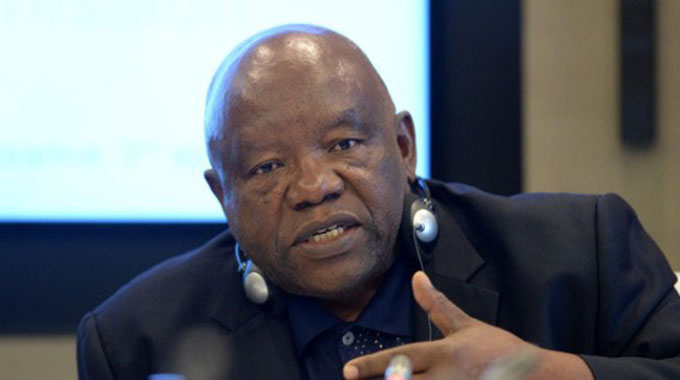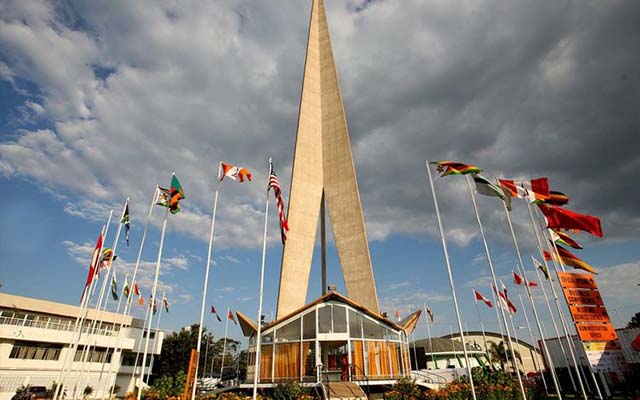Inflation drops as prices slow down

Martin Kadzere and Golden Sibanda
THE rate at which prices increased (inflation rate) in the month of November 2019 significantly slowed on the back of relative stability of the exchange rate due to tight control of broad money supply growth in the economy.
Data from Zimbabwe National Statistical Agency (Zimstat) showed that Zimbabwe’s inflation slowed to 17,5 percent month on month in November, from 38,75 percent in October, the lowest rate in the last five month.
Inflation refers to the rate at which prices increase over a measured period, mostly a month or a year.
However, a decline in inflation does not imply a decrease in prices, but signifies slower pace of average price increases.
Since inflation rate is derived from average prices in a consumer basket, in some instances not all products may have registered prices increase, as some would have remained unchanged or even declined.
Latest statics from Zimstat shows that month on month food and non-alcoholic beverages inflation rate stood at 22,63 percent in November, shedding 25,72 percentage points on the October rate of 48,35 percent.
Non-food inflation rate stood at 13,94 percent, shedding 18,96 percentage points on the October rate of 32,90 percent. The Consumer Price Index data was collected in the period between 13 and 19 November 2019.
The Reserve Bank of Zimbabwe is targeting monthly inflation of 10 percent by year-end although some critics believe the target may not be achievable. The inflation rate for October was the highest since June, when it reached 39,9 percent.
The pricing regime in Zimbabwe is largely linked to the money supply determined exchange rates and its stability for most of November, at around US$1 to $16,57, resulted in relatively stable prices.
Even the exchange rates on the parallel markets were little changed around US$1 to $21. Only this month did the rates slightly move up.
“One reason would be that the exchange rate has stabilised,” economist Brains Muchemwa said in an interview yesterday. “Prices in this country have largely been tracking the exchange rate. However, November was characterised by relatively stable exchange rate.”
“So the pass through effect was muted because the exchange rate was not moving.
That on its own has a pass through effect in stabilising the prices,” he added.
At its last meeting on November 29, the Monetary Policy Committee noted that the country’s expansionary fiscal policy was expected to pile inflationary pressure on the economy.
The committee noted that the country’s 2020 National Budget had potential expansionary impact on money supply, which limits the scope for tightening of monetary policy as required under the bank’s disinflation programme.
Concerned with the expected money supply growth, the Monetary Policy Committee directed the central bank to re-calibrate the reserve money targeting framework.
The committee had also projected monthly inflation for November 2019 to decline further and therefore resolved to maintain the policy rate at the current level of 35 percent.
Annual inflation in Zimbabwe has galloped from 5,39 percent prior to de-dollarisation in September last year to 175,6 percent at the last official count before publication of the rate was suspended in July this year.
Economist and Zimbabwe National Chamber of Commerce chief executive Takunda Mugaga attributed the relative price stability on tighter monetary conditions, which have also resulted in little exchange rate movement.
“It just means prices, if you compare with last month and today, the rate at which they are going up has slowed. It does not mean prices are going down, but that they are going up at a decreasing rate,” Mr Mugaga said.
“The major factors are monetary conditions. When you say monetary conditions you are focusing on both broad money supply and reserve money.
Broad money supply has been major driver of inflation in this economy,” he said.
Broad money is notes, coins in circulation and all deposits within banks, what is called total stock of money. Reserve money refers to ‘currency in circulation’ plus at the Reserve Bank, also called high powered money.
Going forward, expectations are that the RBZ will maintain the leash on broad money supply, which also drives demand for foreign currency thereby pushing exchange rates up, making it a tool for inflation transmission.
“I think you heard the minister in his 2020 National Budget saying we expect the Reserve Bank to complement efforts to fight inflation by controlling money supply growth. That was section 51 of the budget.”










Comments